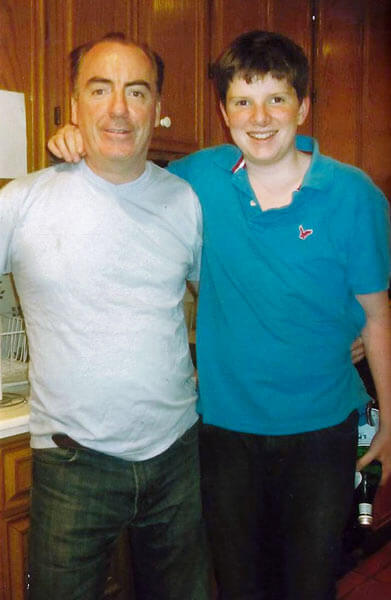By Christina Santucci
A Manhattan hospital should have taken better care of a 12-year-old Sunnyside boy who was given IV fluids and pain relievers, sent home and later died of sepsis in 2012, a state Health Department report concluded.
The report, which details Rory Staunton’s care at NYU Hospitals Center, was recently brought to light by the child’s uncle, Niall O’Dowd, who wrote about the state’s findings for his news website irishcentral.com last week.
Repeated requests for comment from New York University were not answered.
“I was very saddened,” O’Dowd said. “It was the worst fears that any family could have. There seemed to be brutal incompetence throughout every area.”
The document, called a statement of deficiencies, alleges that a standard of care in Rory’s treatment was not met, and that the hospital had no policy in place to alert patients who were being discharged about test results that were still pending.
Rory, who had cut his arm after falling in his Jackson Heights school’s gym, was brought to NYU Langone Medical Center on the evening of March 29, 2012, by his parents, his relatives said in an interview last year. A pediatrician had recommended the child go to the hospital so the pain in his leg and vomiting could be checked out, Rory’s father Ciaran Staunton said.
The 12-year-old was given Tylenol and two liters of IV fluids, and about 2 1/2 hours after arriving at the hospital, he had a temperature of 102 degrees and an elevated heart rate, the report states. This was the last time his vital signs were recorded before he was discharged, according to the report.
The state document says emergency room staff failed to note if Rory could keep down fluids and did not address the pain in his leg, even though Rory rated it as a six on a scale of one to 10.
And abnormal results from a blood count test ordered as “stat” at around 8 p.m. were not reported until after 11 p.m., about 30 minutes after Rory had been released.
“There is no documentation that the treating physician was aware of this abnormal result,” the report states. “The high band results should have raised the physician’s concern for bacterial infection and the need for blood cultures and antibiotic coverage.”
The document goes on to say that there was no documentation indicating that hospital staff told Rory’s family that test results were still pending when he was sent home.
“The facility failed to have a system in place to notify discharged patients concerning abnormal/critical laboratory results when the laboratory reports were pending or not reviewed prior to discharge,” the report states.
Rory’s condition worsened at home and he returned to the hospital, where he was put into the intensive care unit and died April 1.
It was later determined that Rory’s death was the result of sepsis, an infection that causes a reaction in the immune system leading to full-body inflammation, and developed from the cut on his arm.
Rory’s parents, Ciaran and Orlaith Staunton, were unable to comment on the report due to pending litigation, but the couple has been fighting to eradicate sepsis since Rory’s death, O’Dowd said.
The Stauntons started the Rory Staunton Foundation, aimed at reducing the number of sepsis-caused deaths through education and outreach, and championed “Rory’s Regulations,” which were announced by Gov. Andrew Cuomo last year and made New York the first state to require all hospitals to adopt practices to identify and treat the deadly infection early on.
O’Dowd said his relatives are pushing for Rory’s Regulations to be adopted nationwide, and have already received letters from families crediting awareness about sepsis with saving their children’s lives.
“That would be the greatest gift of all from Rory’s death, that no other family would go through what my family went through,” O’Dowd said.
Reach managing editor Christina Santucci by e-mail at timesledgerphotos@gmail.com by phone at 718-260-4589.

































